#prag 2006
Explore tagged Tumblr posts
Text
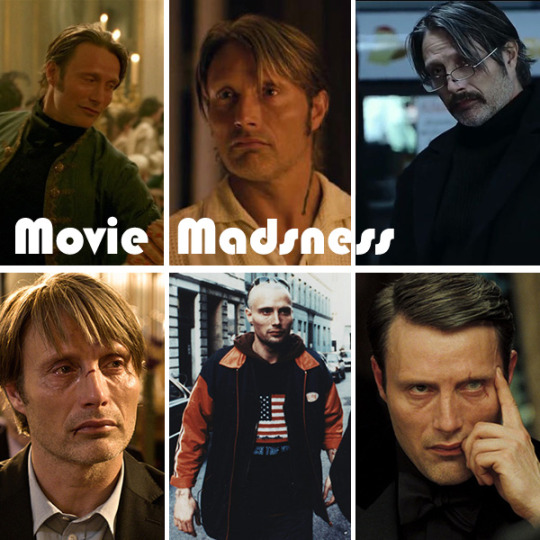
A Mads poll with a difference!
A poll of Mads Mikkelsen movies where the selection is based on range of factors, including but not limited to: genre, writer/director, country of release, date of release and 🎉vibes 🎉
Some of the movies may fit in more than one category, so vibes have mostly informed those decisions.
Round One:
Choose your fave!
Mads on home turf (mostly...)
Elsker dig for evigt (Open Hearts) is a 2002 Danish drama using minimalist filmmaking techniques of the Dogme 95 manifesto. The story follows a man paralyised in a car accident, the woman who hit him and the strange love triangles that follow. Mads plays Niels, a doctor, and husband of the woman who caused the accident.
Prag (Prague) is a 2006 Danish drama following Christoffer as he goes to Prague to retrieve the body of his recently deceased father. The trip results in the tensions, strained relations and secrets. Mads plays main character Christoffer.
Exit is a 2006 Swedish thriller about investment businessman Thomas who is arrested for the suspected murder of his business partner. When he tries to call his lawyer, the phone is answered by someone he believed to be dead. Mads plays main character Thomas alongside Alexander Skarsgård.
Efter brylluppet (After the Wedding) is a 2006 Danish-Swedish drama following a man who moved to India to avoid commitment, only to discover years later that he has a grown daughter. Mads plays Jacob, the main character, who returns to Denmark on a fundraising trip only to find it is a ruse in order to introduce him to his daughter.
It's all drama up in here! Who will you vote for?
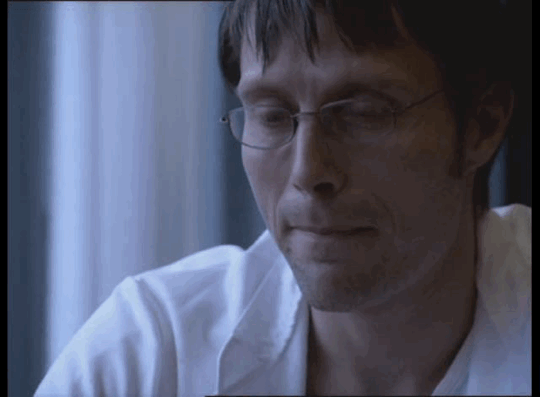
13 notes
·
View notes
Text
Nichts geht mehr
Der Skandal im sächsisch-tschechischen Glücksspielmilieu: warum die Spielbank Zinnwald der Dreh- und Angelpunkt bei der Investorensuche war.
Die Auswahl ist nicht üppig. Der Mann mit dem Schnauzbart blickt kurz in die Speisekarte, dann bestellt er in fließendem Tschechisch den Klassiker: „Vepro, knedlo, zelo a kolu. Prosim.“ Schweinebraten, Knödel, Kraut und eine Cola, bitte. Die Kneipe liegt in einer nordböhmischen Kleinstadt, der Mann mit dem Schnauzbart will anonym bleiben und etwas erzählen darüber, „wie das so gelaufen ist mit den Kasinos an der Grenze“. Mehr als 20 Jahre war er in der Glücksspielszene unterwegs: als Lizenzgeber, als Manager, als Spielbankchef. Ein Deutscher, der nun in Tschechien seinen Lebensabend verbringt in einem sanierungsbedürftigen Einfamilienhaus. Das große Los hat er offensichtlich nicht gezogen. „Ich hatte Partner, die haben richtig Knete gemacht“, sagt er. Herr Hinsche und seine Freunde zum Beispiel.
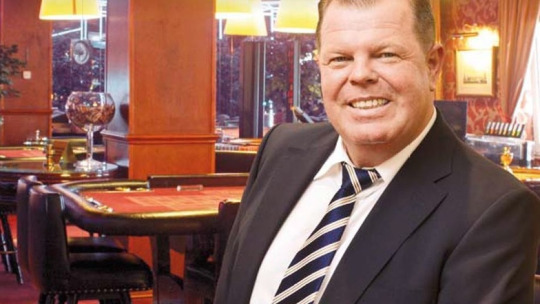
Willi Hermann Hinsche hat sich noch im vorigen Jahr der Öffentlichkeit gern als Geschäftsmann und Mitgesellschafter der Spielbank Zinnwald sowie als Berater der Kasinobranche präsentiert.
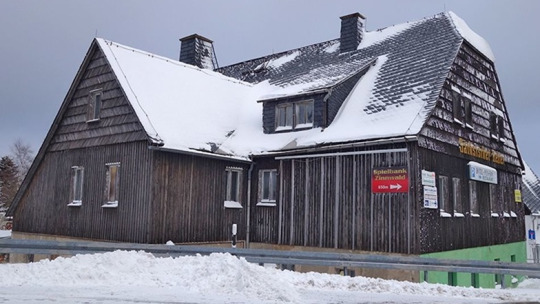
Hinsche-Immobilie in Zinnwald: Der 47-Jährige wollte aus diesem früheren Gasthaus angeblich eine Apartmentanlage für betuchte Glücksspieler machen.
Willi Hermann Hinsche, dessen Firmensitz in Zittau und Haus im benachbarten Hradek nad Nisou Anfang November vorigen Jahres vom Landeskriminalamt Sachsen und tschechischen Ermittlern durchsucht worden waren, soll zu einer zehnköpfigen Bande gehören, die Kapitalanleger um mehrere Millionen Euro betrogen haben soll. Die Staatsanwaltschaft Görlitz ermittelt dazu bereits seit zwei Jahren. Ihr Verdacht: Diversen Kapitalanlegern sollen ohne aufsichtsrechtliche Erlaubnis Beteiligungen an Spielbanken in Liberec, Petrovice, Teplice, Zinnwald und Prag verkauft worden sein. Ein beträchtlicher Teil des Geldes sei jedoch benutzt worden, um den eigenen Lebensunterhalt zu finanzieren. Der 47-jährige Hinsche soll dabei als Mitgesellschafter der Spielbank Zinnwald eine nicht unbedeutende Rolle gespielt haben. Hinsches Anwalt weist das entschieden zurück.
Der Mann mit dem Schnauzbart, nennen wir ihn Schmidt, sieht das ganz anders. Hinsche sei „so um 2003 herum“ auf ihn zugekommen, weil er Spiellizenzen für rund 20 tschechische Kasinos gehabt habe, sagt Schmidt. Den ersten Versuch habe Hinsche in einem Motel beim Dorf Chrastava an der Schnellstraße zwischen Zittau und Liberec unternommen. Dort eröffnete im Sommer 2006 das „Casino Universum“. Als Betreiber fungierte eine Hilada Spielbanken AG mit Sitz im südtschechischen Brünn.
Schon damals warb diese Firma um Anleger. Es bestehe in naher Zukunft die Möglichkeit, durch den Kauf weiterer 18 Spielbanken Marktführer in Tschechien zu werden“, hieß es damals. Tschechien wurde als das „kommende Las Vegas Europas“ gepriesen. Man suchte Investoren „ab einer Summe von 10 000 Euro“. Zudem „bestünde eventuell auch die Möglichkeit von stillen Teilhaberschaften an allen unseren Spielbanken sowie an den zu erwerbenden Spielbanken“. Die Renditen seien „erfahrungsgemäß sehr gut und ebenso sicher. Denn am Ende gewinnt immer die Bank!“
Schmidt hat inzwischen seinen Schweinebraten verputzt. Schon in Chrastava habe Hinsche keine offizielle Funktion übernommen, sondern sei nur als Berater aufgetreten, sagt er. Tatsächlich findet sich im damaligen Impressum der Hilada-Spielbanken keine Spur des 47-Jährigen. Jedoch tauchen dort drei Personen auf, die im Betrugsverfahren der Staatsanwaltschaft Görlitz ebenfalls eine Rolle spielen.
So etwa ein Kaufmann aus dem ostsächsischen Neugersdorf-Ebersbach, der im Hilada-Vorstand saß und dessen Wohnsitz die LKA-Fahnder ebenfalls durchsuchten. Als Direktionsmanager für den Spielebetrieb taucht im Impressum ein Anlagevermittler aus dem westthüringischen Kammerforst auf; auch ihm statteten die Ermittler einen Besuch ab. Er soll einen Großteil der Beteiligungsverträge an den Spielbanken vermittelt haben. Der inzwischen 54-Jährige räumt das am Telefon ein, sagt aber auch: „Ich fühle mich selbst ausgenutzt.“ Mit Herrn Hinsche habe er nichts mehr zu tun, weiter wolle er sich nicht äußern.
Als Aufsichtsratsvorsitzender der Hilada war ein Anwalt aus Brünn tätig. Der Jurist heißt Milan Vasicek. Er verkauft unter anderem nach tschechischem Recht gefertigte GmbH-Firmen „an jeden, der Interesse hat“. Vasicek soll, so vermuten es die Ermittler, den anderen Verdächtigen geholfen haben, ein komplexes Firmengeflecht aufzubauen, um die tatsächlichen Eigentumsverhältnisse gegenüber den Investoren zu verschleiern. Steuer- und bilanzrechtliche Fragen seien zudem über eine Vasicek-Firma in Zypern geregelt worden. Der 50 Jahre alte Anwalt weist die Vorwürfe zurück und teilt mit, er habe „keine Informationen über den Tatbestand in Deutschland“.
Der Kaufmann aus Neugersdorf, der Anlagevermittler in Thüringen, der Jurist aus Brünn – Herr Schmidt in der böhmischen Kneipe kennt sie alle. 2010, sagt er, hätte er selbst Geschäftsführer der Spielbank Zinnwald werden sollen. „Das ist zweifellos eines der schönsten Kasinos in Tschechien“. Es sei ausgestattet mit edlen Wandtextilien und flauschigen Teppichen. Schmidt zeigt einen Werbeprospekt. Diverse Poker- und Blackjack-Tische, drei Roulette-Spielmaschinen, 45 Slotautomaten, verteilt auf drei Etagen. Dazu zwei Bars, ein Restaurant und Extra-Apartments „für besonders glückshungrige Spieler“. Zinnwald sei das Vorzeigeobjekt für potenzielle Investoren gewesen, sagt Schmidt.
Ein Anleger erinnert sich. Er ist Professor für Staatsrecht und sagt am Telefon, er sei sehr wohlhabend und „mit einem kleinen Teil seines Vermögens auch am grauen Kapitalmarkt“ tätig. Sich an einer tschechischen Spielbankfirma mit hohen Renditen und gewissen Steuervorteilen zu beteiligen, das sei ihm als „cleveres Modell“ erschienen. Den ersten Kontakt dazu habe er mit dem Vermittler aus Thüringen gehabt, dann sei er nach Zinnwald eingeladen worden. „Wenn meine Gastgeber auch etwas halbseiden wirkten, das Kasino war sehr schick.“ Der 69-Jährige investierte einen sechsstelligen Betrag. Inzwischen fühlt sich der Professor „übers Ohr gehauen“; sämtliche Unterlagen zu seinen Spielbankinvestitionen habe er der Staatsanwaltschaft in Görlitz zur Verfügung gestellt.
Herr Schmidt in Nordböhmen hingegen investierte nichts, nicht einmal in seine berufliche Karriere. Er lehnte den Chefposten in Zinnwald ab. „Das war mir zu heiß, wie die da mit den Anlegern kamen“, sagt er. Vermutlich wegen dieser Entscheidung hätten sich die Ermittler bei ihm noch nicht gemeldet.
Die jüngere Geschichte der Spielbank in Zinnwald offenbart, wie das Investorenmodell funktionierte. Ende 2009 verkauft der Jurist Vasicek die tschechische Firmenhülle Detacol an Hinsche und einen Kaufmann namens Josef L. aus München. Letzterer ist ein erfahrener Beteiligungsexperte, mehrere Jahre lang war er als Finanzvorstand im Geschäft mit Filmfonds tätig. Auch er gehört zu den Beschuldigten in dem Görlitzer Verfahren und dürfte der Kopf der mutmaßlichen Bande gewesen sein.
Hinsche und Josef L. machten aus der Detacol die Spielbank Zinnwald sro, eine tschechische GmbH. Wie Jahre zuvor bei der Hilada ist auch in diesem Fall der Firmensitz die Kanzlei Vasiceks in Brünn. Innerhalb eines Jahres wechseln die Geschäftsführer dreimal, vom Herbst 2010 an ist es ein inzwischen 44 Jahre alter Mann aus der Nähe von Regensburg. Fortan läuft die Anteilsverkaufsmaschinerie: Wer sich an der Spielbank in Zinnwald beteiligen will, muss dies für fünf Jahre mit mindestens 50 000 Euro tun. Dafür erhält der Anleger im Gegenzug einen Anteil von einem Prozent und profitiert an den Erträgen der Spielbank. Da es sich um stille Beteiligungen handelt, tauchen die Investoren im tschechischen Handelsregister nicht auf. Analoge Modelle existierten für Kasinos in Liberec, Teplice, Petrovice und Prag. Sie sind jedoch alle bei Weitem nicht so repräsentativ ausgebaut wie Zinnwald.
Mehreren Anlegern zufolge flossen ab Ende 2012 die zugesagten Beteiligungsgewinne nur noch sporadisch, später gar nicht mehr. Dennoch erwerben Hinsche, Josef L. und der 44-jährige Regensburger eine nur 500 Meter von der Spielbank entfernt liegende Gasthofruine, um, wie es der Verkäufer sagt, „daraus Luxusapartments für betuchte Glücksspieler zu machen“. Der Name ist im Handelsregister bereits eingetragen: Goethe Residenz sro. Denn im Juli 1813 übernachtete dort tatsächlich Goethe. Den Kaufpreis habe Hinsche bar bezahlt, sagt der Verkäufer. Die Apartments sind bis heute nicht entstanden.
Im November 2013 überschreiben Hinsche und Josef L. ihre Spielbankanteile auf eine Holding mit Sitz auf der Karibikinsel Belize. Die ehemalige britische Kolonie ist ein Steuerparadies. Informationen zu Personen zu recherchieren, die an den dort registrierten Gesellschaften beteiligt sind, ist quasi unmöglich. Eigentümer werden in keinem öffentlichen Register eingetragen, es gibt weder eine Buchhaltungs- noch eine Bilanzierungspflicht. Das Bankgeheimnis ist verfassungsrechtlich fixiert.
Kaum haben sich Hinsche und L. von ihren Anteilen getrennt, erwerben sie mit einer weiteren Person, einem befreundeten Buchhalter aus dem Raum Stuttgart, eine neue Firma: in Bratislava. Auch gegen den Stuttgarter wird ermittelt. Das Trio gibt der Firma erneut den Namen Spielbank Zinnwald sro, diesmal aber ist es eine GmbH nach slowakischem Recht. Deren Geschäftsführer wird wieder der 44-Jährige aus Regensburg. Jetzt ist es ein Quartett, das kräftig Werbung macht für Zinnwald.
Die Spielbank präsentiert sich in einem Werbemagazin als glänzende Adresse. Von Hotels in Radebeul und Dresden aus werden Shuttle-Busse zum Glücksspiel an die Grenze bezahlt, Taxis und Straßenbahn werben für das Kasino. Hinsche lässt Schaukasinos in der Altmarktgalerie und zum Semperopernball in Dresden aufbauen. So wird um immer neue Investoren geworben, Gewinne aber wirft die Spielbank inzwischen nicht mehr ab. Somit hätten die Renditen für die Anleger nicht mehr finanziert werden können, heißt es in den Ermittlerunterlagen. Das habe nur über neue Beteiligungsverträge realisiert werden können. Die Staatsanwaltschaft sieht darin ein Schneeballsystem.
Hinsche und seine Partner nutzen zur Anlegerakquise auch die bereits 2010 gegründete Las Vegas Spielhallen GmbH in Zittau. Im Internet kündigt das Unternehmen den Aufbau von fast 100 neuen Kasinos in Deutschland an. Wieder wird aggressiv und massenweise um Investoren gebuhlt; ein Verfahren wegen unlauterer Werbung bei der zuständigen Bundesnetzagentur ist die Folge.
Inzwischen ist die Las Vegas Spielhallen GmbH pleite. Der Insolvenzverwalter sagt, Geld sei da nicht mehr zu holen. Auch die Spielbank in Zinnwald ist geschlossen. Bereits seit Ende Januar besteht ihr Internetauftritt nur noch aus einer Seite. „Neueröffnung Anfang März“ ist dort zu lesen. Vor Ort ist davon nichts zu erkennen. Nur ein Auto mit einem Kennzeichen aus Bosnien-Herzegowina steht im Innenhof.
0 notes
Text
Planetendissing
// von Erwin Grosche // Bis zum Jahre 2006 konnte man sich die Reihenfolge der Planeten unseres Sonnensystems nach Günther Schröders Merkspruch: „Mein Vater Erklärt Mir Jeden Sonntag Unsere Neun Planeten: Merkur, Venus, Erde, Mars, Jupiter, Saturn, Uranus, Neptun, Pluto“ merken. 2006 beschlossen Wissenschaftler auf dem Astronomie-Kongress in Prag, dass Pluto nicht mehr als Planet zählt. Nun…
View On WordPress
#Aiga Rasch Bildband#Akademie der Abenteuer#Akademie der Abenteuer von Boris Pfeiffer#Alexander Bichler#Alltagsbeobachtungen#Andreas Schlüter#Andy Siege#Anita Rehm#Anka Rahn#Anna Tortajada#Anne Jaspersen#Antje Jortzik-Paschek#Augsburg#Autor#Autorin#Balkonien#Bar#Berlin#Berlin Wilmersdorf#Buchautor#Buchserie#Cappucciono#Clara Zetkin#Darlington Road Kids#Das ist nicht so – das ist ganz anders#Donnerwetter#Dragonfly#Drdjuck#Eiszeit#Erwin Grosche
0 notes
Text
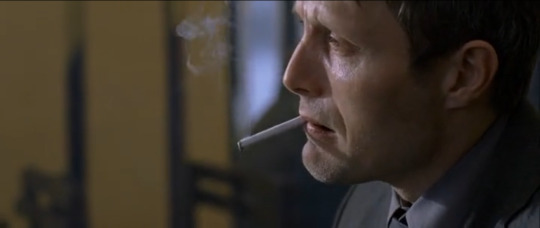
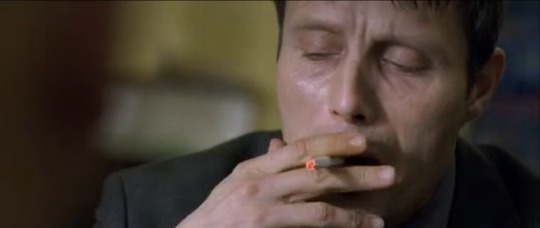
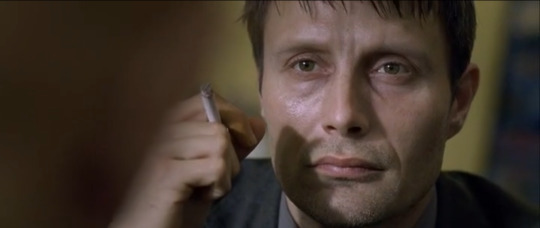
Mads Mikkelsen in Prague (2006) dir. Ole Christian Madsen
#mads mikkelsen#films#prag#prag 2006#prague 2006#prague#smoking#ole christian madsen#movies#screencaps#my screencaps#side profile
91 notes
·
View notes
Photo
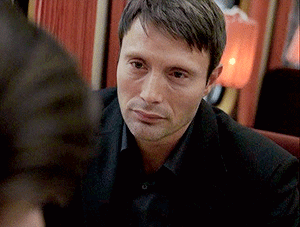


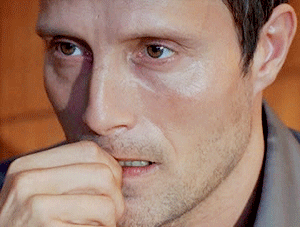
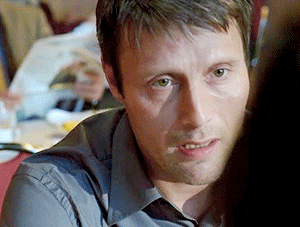

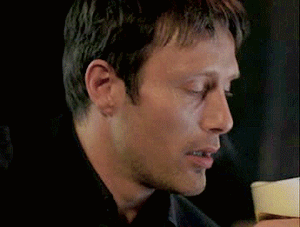
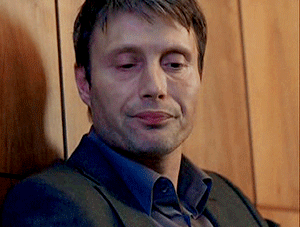
MADS MIKKELSEN as CHRISTOFFER
Prag (2006) dir. Ole Christian Madsen.
#mads mikkelsen#madsmikkelsen#madsmikkelsenedit#mikkelsenedit#prag#prag 2006#mads mikkelsen movie#christoffer#my post#mads#mikkelsen
1K notes
·
View notes
Photo
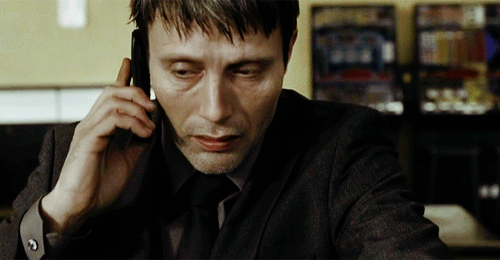
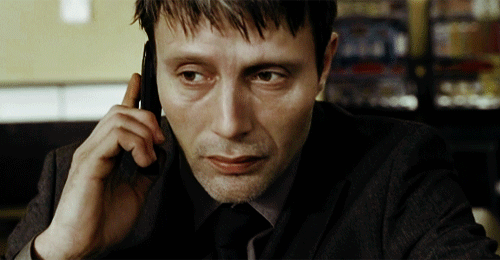
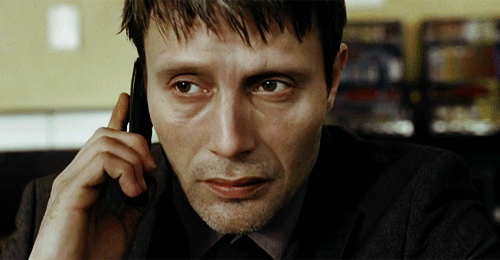
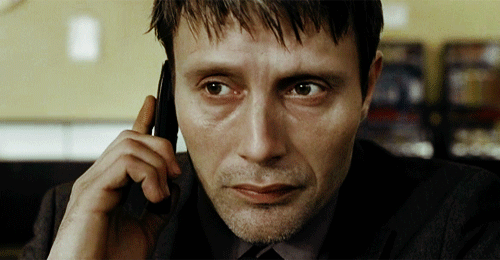
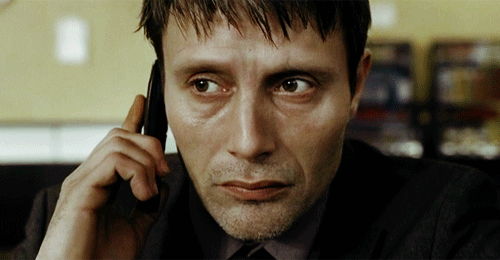
Prag, 2006.
By: thejennire
Check the Tags!!! [x]
171 notes
·
View notes
Photo




Я решил составить список самых страшных - по моему мнению - фильмов ужасов (впрочем, не всегда это чисто ужастики). Причем выбирал я не сколько по качеству, сколько по тому эффекту, который они на меня оказали. Я отобрал все ознобные, ледянящие кровь, жуткие до обморочности фильмы - опять-таки лично для меня - которые я еле смог досмотреть из-за сжирающей меня заживо крипоты, когда я боялся даже дышать. Хотя некоторым фильмам хватало и нескольких страшных сцен, чтобы запомниться НАВСЕГДА, а где-то меня убивала сама нездорово-жуткая атмосфера. Понимаю, кто-то может возразить: “Но фильм X совсем не страшный, вот трусишка!”, но, повторяю, список совершенно субъективный. Под катом можно найти список с русскими и оригинальными названиями, а также год выхода.
- Кошмар на улице Вязов (A Nightmare on Elm Street) 1984 - Твин Пикс: Огонь, иди со мной (Twin Peaks: Fire Walk with Me) 1992 - Сияние (The Shining) 1977 - Зловещие мертвецы (Evil Dead) 1981 - Мертвая тишина (Dead Silence) 2006 - Малхолланд Драйв (Mullholland Drive) 2001 - Пражский студент (Der Student von Prag) 1913 - Астрал (Insidious) 2011 - Звонок (Ringu) 1988 - Проклятие (Ju-On) 2000 - Последнее предупреждение (The Last Warning) 1929 - Глубокой ночью (Dead of Night) 1945 - Проклятый дом (The Witch in the Window) 2018 - Ghostwatch 1992 - Прикосновение 1992 - Карнавал душ (Carnival of Souls) 1965 - Женщина в черном (The Woman in Black) 2012 - Пост Мортем (Post Mortem) 2020 - Сайлент Хилл (Silent Hill) 2006 - Порожденный (Begotten) 1991
5 notes
·
View notes
Photo

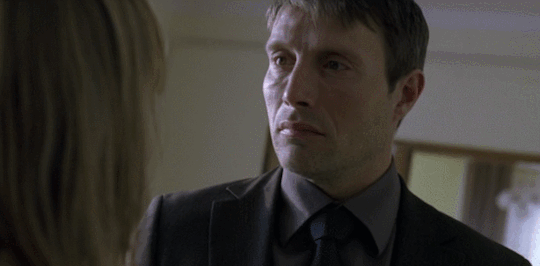
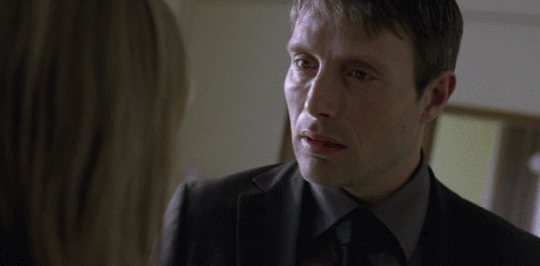
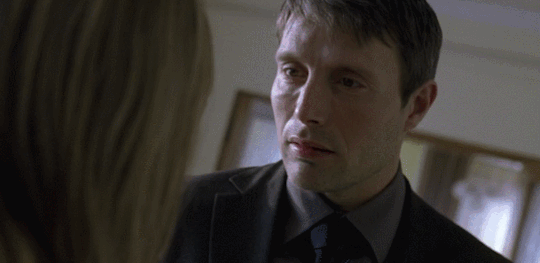
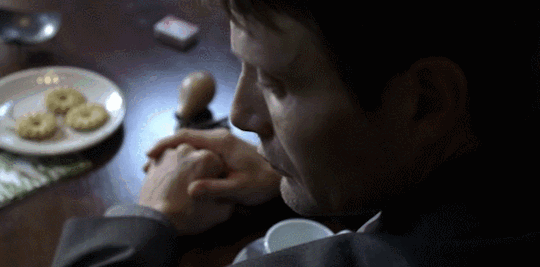
Prag (2006)
18 notes
·
View notes
Text




Prag (Prague). 2006
This film is so subtle and very worth watching (not just because our beloved actor’s in it I promise).
79 notes
·
View notes
Photo


Prag (2006), Ole Christian Madsen
67 notes
·
View notes
Text
The Possible Bodies Inventory: dis-orientation and its aftermath - Jara Rocha, Femke Snelting
https://www.raco.cat/index.php/Inmaterial/article/view/343359/434439 - Following Sara Ahmed’s invitation “to think how queer politics might involve disorientation, without legislating disorientation as a politics”
“We remain physically upright not through the mechanism of the skeletonor even through the nervous regulation of muscular tone, but because we are caught up in a world” (Merleau-Ponty quoted in Ahmed, 2006).
With the help of the multi-scalar and collective practice of inventorying, we make an attempt to think along the agency of these items, hopefully widening their possibilities rather than pre-designing ways of doing that could easily crystallize into ways of being.
Ra-ther than rarefying the items, as would happen through the practice of collecting, or pinning them down, as in the practice of cartography, or rigidly stabilizing them, as might be a risk through the practice of archiving, inventorying is about continuous updates, and keeping items available.
Among all of the apparatuses of the Modern Project that persistently operate on present world orderings, naming and account-giving, we chose the inventory with a critical awa-reness of its etymological origin. It is remar-kably colonial and persistently productivist: inventory is linked to invention, and thereby to discovery and acquisition. [1] The culture of inventorying remits us to the material origins of commercial and industrial capitalism, and connects it with the contemporary databa-se-based cosmology of techno-colonialist turbo-capitalism. But we learned about the potentials embedded in modern apparatuses of designation and occupation, and how they can be put to use once carefully unfolded to allow for active problematisation and situated understanding (Haraway, 1992). In the case of Possible Bodies, it means to keep questioning how artifacts co-habit and co-compose with techno-scientific practices, historically sustai-ned through diverse axes of inequality. We ur-gently need research practices that go through axes of diversity.
-
inventory (n.)
early 15c., from Old French inventoire "detailed list of goods, a catalogue" (15c., Modern French inventaire), from Medieval Latin inventorium, alteration of Late Latin inventarium "list of what is found," from Latin inventus, past participle of invenire "to find, discover, ascertain" (see invention).
The form was altered in Medieval Latin by influence of words in -orium, which became very common in post-classical and Christian use. It properly belongs with words in -ary, and French has corrected the spelling. Related: Inventorial; inventorially.
inventory (v.)
"make a list or catalogue of," c. 1600, from inventory (n.). Related: Inventoried; inventorying.
-
The temporalities of inventorying are discon-tinuous, and its modes of existence are prag-matic: it is about finding ways to collectively specify and take stock, to prepare for eventual replacement, repair or replenishment. Inven-torying is a hands-on practice of readying for further use, not one of account-giving for the sake of legitimation. As an “onto-epistemologi-cal” practice (Barad, 2012), it is as much about recognizing what is there (ontological) as it is about trying to understand (epistemological). Additionally, with its roots in the culture of manufacture, inventorying counts on cultural reflection as well as on action. This is how as a method it links to what we call “disobedient action-research”, it invokes and invites further remediations that can go from the academic paper to the bug report, from the narrative to the diagrammatic and from tool mis-use to in-terface re-design to the dance-floor. It provides us with inscriptions, de-scriptions and re-in-terpretations of a vocabulary that is developing all along.
-
Item 007: Worldsettings for beginners
“If the point of origin changes, the world moves, but the body doesn’t.” (François Zajega, interview, 2017) In Blender, virtual space is referred to in many ways: the mesh, coordinate system, geometry and finally, the world. In each case, it denotes a constellation of x, y, z vectors that start from a mathematical point of origin, arbitrarily loca-ted in relation to a 3D object and automatica-lly starting from X = 0, Y = 0, Z = 0. Wherever this point is placed, all other planes, vertices and faces become relative to it and organize around it; the point performs as an “origin” for subsequent trans-formations. In the coordinate system of linear perspective, the vanishing point produces an illusion of ho-rizon and horizontality, meant to be perceived by a monocular spectator that marks the centre of perception and reproduction. Points of ori-gin do not make such claims of visual stability.
Naturalized means of orientation such as verticality and gravity are effects applied at the moment of rendering.
The point of origin is where control is literally located. The two-handedness of the represen-tational system indicates a possibility to shift from “navigation” (vanishing point) into “crea-tion” (point of origin), using the same coordi-nate system. The double agency produced by this ability to alternate is only tempered by the fact that it is not possible to take both posi-tions at the same time. The second form of control placed at the origin is the 3D manipulator that handles the rota-tion, translation, and scaling of the object. In this way, the points of origin function as pivots that the worlds are moved around.
The tab contains settings for adding effects such as mist, stars, and shadows but also “am-bient occlusion”. The Blender manual explains this as a “trick that is not physically accu-rate”, suggesting that the other settings are. The “world tab” leaves behind all potential of multiplicity that became available through the computational understanding of “world”. The world of worlds becomes, therefore, impossible.
Blender operates with two modes of “world”: one that is accepting the otherness of the computational object, somehow awkwardly interfacing with it, and another that is about restoring order back to “real”. The first mode opens up to a widening of the possible, while the second prefers to stick to the plausible.
Item 012: No Ground
“No ground” is an attempt to think through issues with situatedness that appear when encountering computed and computational bodies. Does location work at all, if there is no ground? Is displacement a movement, if there is no place? How do surfaces behave around this no-land’s man, and what forces affect them?
What body composi-tions share a horizontal base, what entities have the gift of behaving vertically? How do other trajectorialities affect our semiotic-material conditions of possibility, and hence the very po-litics that bodies happen to co-compose?
We suspect a twist in the hierarchy between gravitational forces. It does not lead to collapse, but results in a hallucinatory construction of reality, filled with floating bodies. If we want to continue using the notions of “context” and “si-tuation” for cultural analysis of the bodies that populate the pharmacopornographic, military and gamer industries and their imaginations, to attend to their immediate political implications, we need to reshape our understanding of them. It might be necessary to let go of the need for “ground” as a defining element for the body’s very existence, though this makes us wonder about the agencies at work in this un-grounded embodiments. If the land is for those who work it, then who is working the ground?
“Disorientation involves failed orientations: bodies inhabit spaces that do not extend their shape, or use objects that do not extend their reach” (Ahmed, 2006, p.160)
When standing just does not happen due to a lack of context or a lack of ground, even a virtual one, the notion of standpoint does not work. Situation, though, deserves a second thought. Floating is the endurance of falling. It seems that in a computed environment falling is always in some way a floating. There is no ground to fall towards that limits the time of falling, nor is the trajectory of the fall directed by gravity. The trajectory of a floating or persis-tently falling body is always already unknown.
In the dynamic imagination of the animation, the ground does not exist before the movement is generated; it only appears as an afterthought. Everything seems upside down: the foundation of the figure is deduced from, not pre-existing its movement. Does this mean that there is actually no foundation, or just that it appears in every other loop of movement? Without the ground, the represented body could be understood as becoming smaller, and that would open the question of dimensionality and scaleability. But being surface-dependent, it is received as moving backwards and forwards: the modern eye reads one shape that changes places on a territory.
In most cases of virtual embodiment, the abso-lute tyranny of the conditions of gravity does not operate. In a physical situation (a situation organized around atoms), falling on verticality is a key trajectory of displacement; falling cannot happen horizontally upon or over stable surfa-ces. For the fleshy experienced, falling counts on gravity as a force. Falling seems to relate to liquidity or weightlessness, and grounding to solidity and settlement of matters. Heaviness, having weight, is a characteristic of being-in-the-world, or, more precisely, of being-on-earth, magnetically enforced. Falling depends on gra-vity, but it is also - as Steyerl explains - a state of being un-fixed, ungrounded, not as a result of groundbreakingness, but as an ontological lack of soil, of base. Un-fixed from the ground, or from its representation
Does falling change when the conditions of verticality, movement and gravity change? Does it depend on a specific axis? Is it a mo-tion-based phenomenon, or rather a static one? Is it a rebellion against the force of gravity, sin-ce falling here functions under a mathematical rather than under a magnetic paradigm? And if so, “who” is the agent of that rebellion?
In the example, the “feet” of the figure do not touch the “ground”. It reminds us that the position of this figure is the result of computa-tion. It hints at how rebellious computational semiotic-material conditions of possibility are at work. We call them semiotic because they are written, codified, inscribed and formula-ted (alphanumerically, to begin with). We call them material, since they imply an ordering, a composition of the world, a structuring of its shapes and behaviors. Both conditions affect the formulation of a “body” by considering weight, height and distance. They also affect the physicality of computing: processes that generate their pulses in electromagnetic cir-cuits, power network use, server load, etc.
Accu-racy is a relational practice: body and ground are computed separately, each within their own regime of precision. When the rendering of the movement makes them dependent on the placement of the ground, their related accuracy will appear as strong or weak, and this intensity will define the kind of presence emerging.
Thinking present presences can not rely on the lie of laying. A thought on agency can neither rely on the ground to fall towards nor on the roots of grass to emerge from. How can we then invoke a politics of floating not on the surface but within, not cornered but around and not over but beyond, in a collective but not a grass-roots movement? Constitutive con-ditioning of objects and subjects is absolutely relational, and hence we must think of and operate with their consistencies in a radically relational way as well: not as autonomous enti-ties but as interdependent worldlings. Ground and feet, land and movement, verticality and time, situatedness and axes: the more of them we take into consideration when giving account of the spheres we share, the more degrees of freedom we are going to endow our deterritorialized and reterritorialized lives with.
The body is a political fiction, one that is alive (Preciado, 2008); but a fiction is not a lie. And so are up, down, outside, base, East and South (Rocha, 2016), and presence. Nevertheless, we must unfold the insights from knowing how those fictions are built to better understand their radical affection on the composition of what we understand as “living”, whether that daily experience is mediated fleshly or virtually. -
Item 022: Loops
Just before he died in 2009, Cunningham released the choreography for “Loops” under a Creative Commons Attribution-Noncom-mercial-Share Alike 3.0 license. No dance-no-tations were published, nor has The Merce Cunningham Trust included the piece in the 68 Dance Capsules providing “an array of as-sets essential to the study and reconstruction of this iconic artist’s choreographic work.”
From the late nineties, the digital art collective OpenEnded group worked closely with Merce Cunningham. In 2001, they recorded four takes of Cunningham performing “Loops”, translating the movement of his hands and fingers into a set of datapoints. The idea was to “Open up Cunningham’s choreography of Loops completely” as a way to test the idea that the preservation of a performance could count as a form of distribution.
The release of the recorded data consists of four compressed folders. Each folder contains a .fbx (Filmbox) file, a proprietary file format for motion recording owned by the softwa-re company Autodesk, and two Hierarchical Translation-Rotation files, a less common mo-tion capture storage format. The export file in the first take is called Loops1_export.fbx and the two motion capture files are loops1_all_ri-ght.htr and loops1_all_left.htr. Each take is documented on video: one with a hand-held camera and one on a tripod. There is no license included in the archives.
In 2008, the OpenEnded group wrote custom software to create a screen-based work called “Loops”. “Loops” runs in real time, continually drawing from the recorded data. “Unique? — No and yes: no, the underlying code may be duplicated exactly at any time (and not just in theory but in practice, since we’ve released it as open source); yes, in that no playback of the code is ever the same, so that what you glimpse on the screen now you will never see again.” [11] The digital artwork is released under a GPL v.3 license.
After seeing interpretations of “Loops” by other digital artists, such as Golan Levin, the Ope-nEnded group declared that they did not have any further interest in anyone else interpreting the recordings: “I found the whole thing insul-ting, if not to us, certainly to Merce”. [12]
Cunningham developed “Loops” as a performan-ce to be exclusively executed by himself. He con-tinued to dance the piece throughout his life in various forms, until arthritis forced him to limit its execution to just his hands and fingers. [13]
In earlier iterations, Cunningham moved throu-gh different body parts and their variations one at a time and in any order: feet, head, trunk, legs, shoulders, fingers. The idea was to explore the maximum number of movement possibilities within the anatomical restrictions of each joint rotation. Stamatia Portanova writes: “Despite the attempt at performing as many simulta-neous movements as possible (for example, of hands and feet together), the performance is conceived as a step-by-step actualization of the concept of a binary choice” (Portanova, 2013).A recording of “Loops” performed in 1975 is included in the New York Public Library Digital Collections, but can only be viewed on site. [14]
Cunningham danced “Loops” for the first time in the Museum of Modern Art in 1971. He situated the performance in front of “Map (Based on Buckminster Fuller’s Dymaxion Airocean World)”, a painting by Jasper Johns. Roger Copeland describes “Loops” as follows: “In much the same way that Fuller and Johns flatten out the earth with scrupulous objectivi-ty, Cunningham danced in a rootless way that demonstrated no special preference for any one spot”. And later on, in the same book: “Consis-tent with his determination to decentralize the space of performance, Cunningham’s twitching fingers never seemed to point in any one direc-tion or favor any particular part of the world represented by Johns’s map painting immedia-tely behind him” (Copeland, 2004).
3 notes
·
View notes
Text
DWK Podcast - recap
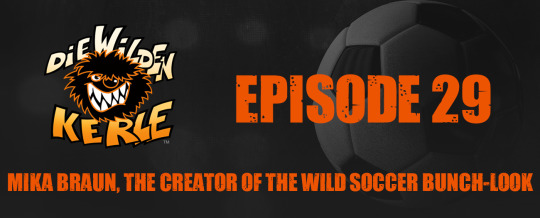
Mika Braun is the costume designer since the very beginning. She created the Look of the wild soccer bunch in the first, second, third and fifth movies. Her costumes influenced and even changed the book covers and the Illustrations of Jan Birck. When it came to the creation of your own world, she was a great teacher for Joachim Masannek.

She basically created the whole look of the wild soccer bunch, according to Masannek
He distinctively remembers their trial and error while trying to get a hairstyle for Leons character, because they wanted him to look like the real Leon and he and Jimi didn’t really look alike (They even tried to colour his hair blonde)
Joachim Masannek and Mika Braun first met at Samfilm
She originally was there for a meeting to talk about a different Movie that was going to be produced, but the people in charge didn’t think she was capable enough, she hadn’t brought her portfolio with her because it was all very rushed
When she met with Joachim however they instantly clicked, they got along great and knew what they wanted to make was going to be Mad Max for Kids. She did bring her portfolio with her this time but he didn’t even want to take a look inside
Because she had worked on a lot of projects regarding TV and advertisements he had a lot of respect for her previous work and felt like he couldn’t judge it as he had never made a movie before, only short films
To him it only mattered that they got along and that he had the feeling he could trust her since they were making something new that may have been made before, but not in that way
She also felt that they were eye to eye as she had also never done a movie for cinemas before. The whole process was not about her experiences and what she was capable of or not capable of, but about him developing this Idea and how they were adapting that together. To her that was so special about these movies, that you could see that everyone put their heart and soul into it
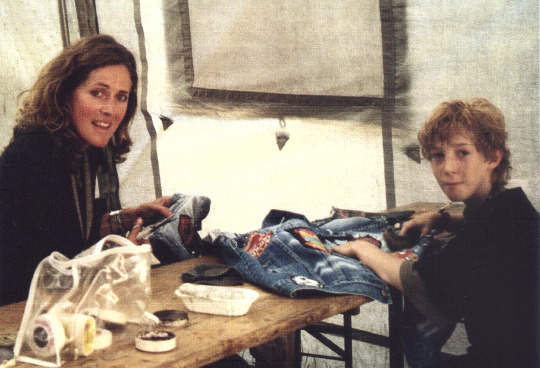
At least you saw it with the german crew. When they were shooting in Prag, they had a few problems. One of the Camera assitants just forgot that the camera was running and when Masannek reviewed the footage (back then it was on VHS) the take was 20 Minutes long.
Another example is one Woman in the costume department who always called people “Darling”:
They were searching for the kids helmets one time and the Woman kept saying the helmets are props and the backpacks are part of the costume, darling until Masannek got so fed up that he took the helmets once they were found and said “Look, darling. I’ll take your darn helmets now and put them into the darn backpacks and then its your problem where they are”
Braun says that that happens quite often during shooting in foreign countrys, because they have differently distributed teams and work with different systems
It just happened to Mika that she was baffled that the crew she was working in had no Parasols for the actors even in 40 degree heat or if it was raining, they didn’t care and said that its not their job. Even though in america for example they have a position (personl assistant) just for that. Or you have someone for directing assistance or Script or Continuity. But to her suprises like that are whats so nice about the job
During Masanneks last Movie Luliane Susewind they were shooting in Aachen but also in Belgium and he also had to learn a few things:
the first one was that the Makeup artist didn’t do the hair of the actors, they found out two to three weeks before the shooting started and had to hire an extra Hair stylist
the second things was that part of the crew just take three weeks of vacation unannounced and their replacement doesn’t have a clue about anything and Masannek showed up at the set one day and his costume designer was nowhere to be found and when he asked where she is he got told “Uh...shes on vacation”
Mika was very glad that the second wild soccer bunch movie was shot in Bavaria, not in the Czech Republic, because she was able to bring her team with her.
To the kids the shooting of the second movie was the most fun, but to Masannek it was the most exhausting to the point he thought he never wanted to make a kids movie again
He was like, well, the first movie was so exhausting and complicated and he wouldn’t have to work as hard with the second one.He worried that that movie wouldn’t be as good because he felt like he wasn’t putting enough effort into it and it didn’t seem as complicated
but then Mika Braun invited him to a flea market in Braunau and he thought it would be great to do something else than the movie for a day, he would find something nice to buy and she showed him a lot of nice stuff
that day Masannek found out what making a movie does to someone because he was going through the flea market but couldn’t see anything other than the movie and couldn’t focus on anything
although he did buy something that he found ten years later in his basement when he moved (it was around a 120 Whistles although he does not remember why he bought them)
They mentioned their Vision of Mad Max earlier and Sascha Heimanns asks them how they get from an Idea to the finished product, like the helmets they talked about or the necklaces
Mika answers that there is a whole development process behind everything. It starts with her reading the script and getting an Idea of what something looks like, she discusses that with Joachim who tells her about how they are basically all in black and have these logos, but everyone has their special thing and they search together for what fits best
She will never forget the discussion about Staraja Riba. Originally she thought that the witch was supposed to be big and terrifying like the thunderbolt giants, so that the kids would feel small next to her or no one would be afraid of her
Joachim insisted that she should crawl over the ground like a spider and in the end she thought it was good that they did it his way because it was the scariest thing in the whole movie series to her and that was one instance where they didn’t have the same opinion
The Staraja Riba thing was overall difficult to get righ tin the end
Because Buena Vista didn’t want the director to attend the test screening ( although he was present during the screening of the first movie and that went pretty well) Masannek was offended and they hired a different director who went to cut the scene differently. The producers said that the scene with the witch wasn’t believable or scary anymore and Joachim got to fix it
He thinks the bravest thing they did was the scene with the love letter and the glowing hearts, he originally wasn’t allowed to do that scene because it was a “boys movie” and the audience wouldn’t like it
They did a test screening for an audience that only consisted of boys without approval of the producers and the feedback was good except for the love letter scene which the boys didn’t like
Another thing that was difficult was the paint the actors had on during the scene where the bunch plays against the SV 1906. That originally took too much effort and time to do (because drawing the markings for everyone took 4 hours and taking it off took 4 hours also Sarah was allergic to the paint) but Joachim just decided they were going to do it anyways
Mika said that she appreciated the fantastical aspect of the movies, to try something that hasn’t been done before and that that was probably what the kids found so fascinating and fun
To her it was very special to work on it even though it was relatively low-budget
because of that for example they spent whole nights painting Logos on T-Shirts
Joachim said that she played a huge role in the evolution of the Logo itself, the first thing she put the minimalistic Logo on was the black shirt Maxi wears at the beginning of the third Movie
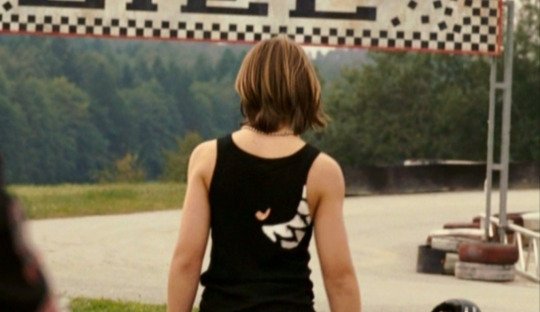
It was her idea to only put the eye and the teeth on there and that has been adapted for Merchandise ever since
Sascha asks why Mika hasn’t worked on the fourth and sixth movie
When they were shooting the fourth movie in Mai 2006 she was in Kenia to adopt her daughter and because she spent 7 Months there she wasn’t able to work on the movie
But she said Susann Bieling did a great job with that movie
She shared the 5th one with Andrea Spanier because her daughter was still so small that she felt like she wouldn’t be able to do it alone
These are some of her costume designs for the 5th movie, for Leon and Klette
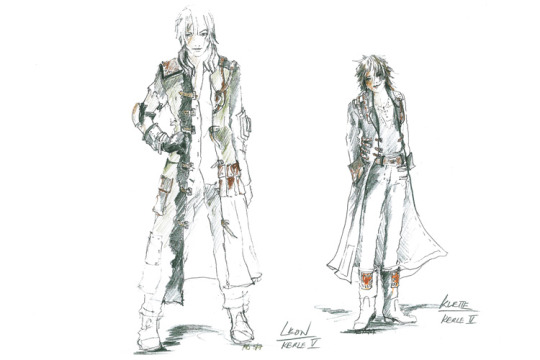
They worked so well together that Mika sais she was spoiled afterwards and when she went on to another production it didn’t go as smoothly anymore
That production was Gangs, for which they also asked Joachim Masannek if he wanted to work on it, but he was in contract with Constantin Film for Wildernacht
For the sixth movie Mika was also unavailable due to another production she had already agreed to
Question:
Sibille 24 years old: She grew up with the wild soccer bunch and because they talked about the new series in the last podcast episode, she wanted to say that she thinks the idea is great. The bunch has been inspiring to her back then and thinks that the bunch is a great role-model with their creativity and bravery. She would be thrilled about a new series.
Answer:
The Procuders originally wanted to retell a story in the vein of the first and second movies but Joachim said he is sick of writing that fight against fat Michi over and over so they decided on something new
The story will take place in Berlin
The Kids will come from different social backgrounds
One boy will be the son of a Maori Woman, who came to germany when she was 17 years old and pregnant
His dad was a german tourist but he dumped his Mom
She currently lives in Marzahn and has her own Tattoostudio
The boy wants to become the best Goalkeeper in the World
hes very stubborn but a great guy overall
Then there is a girl whose Mother is a turkish Policewoman and she lives in an allotment garden
they hear about this hidden world of the wild bunch in which Kids can fight to do what what they believe in
The series will be called “Forever wild”
Its still rooted in what has already been established
there will be some characters from the movies but they will appear in a different way than how we know them
He said that the girl that asked the question is over 20 and that generation is exactly who they want to do the series for
Mika chimes in to say that back then the movies created a boom and more girls started to play soccer
She said its never wrong to challenge society and gender stereotypes
Joachim says that to him its very fascinating that times are getting more conservative and we are not living in a world anymore where little boys have to be raised by a woman
He said that the perspective of society is different right now with metoo for example and that its an exciting challenge to define what a role model is
To question what is a boy, what is a girl, what is a man or woman?
One family in the series he is planning consists of a native american father and a mother who is a descendant of the Aborigines
They live in Spandau and have an indian daughter and a son who is african
The parents take turns on who is leading the company and who is taking care of the kids, to them every job is equal and everyone has to take on some responsibility
Masannek says he notices even with his little Kids (his 9 years old daughter and his 2 years old son) that they already want to know what exactly a woman is or a man is
He wants his kids to develop freely and once they know what the stereotypes are they can decide to not support these stereotypes anymore
Mika Braun agrees that these topics are very important right now and that it is a responsibility of all creatives and all the tolerant folks to take on these kinds of topics so that the conservative ideals don’t take root
And thats it for Episode 29!
5 notes
·
View notes
Photo

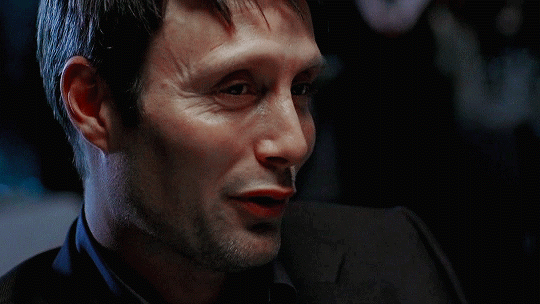
mads mikkelsen in prag (2006)
#mads mikkelsen#prag#gilles gifs#i fell asleep watching this bc i was tired#but even in those like ten minutes of Being Awake#i noticed a phenomenal bone structure...
423 notes
·
View notes
Photo

Die Premium-Lichtmarke Brokis steht für die Synthese von exquisitem Design, höchster Qualität und der bemerkenswerten Handwerkskunst böhmischer Glashandwerker. Konzipiert von renommierten tschechischen und ausländischen Designern, haben die originalen BROKIS Lampen immer wieder internationale Anerkennung gefunden. Das Unternehmen kombiniert mundgeblasenes Glas mit anderen veredelten Materialien wie Holz und manuell gepresstem Metall zu kühnen Lichtkompositionen, die die Grenzen des zeitgenössischen Designs überschreiten. Das Brokis Lampen-Portfolio umfasst moderne funktionale Beleuchtungskörper, dekorative Objekte und einzigartige Lichtlösungen für Architekten und Innenarchitekten. Mit eigenen leistungsfähigen Produktionsstätten, die auf eine mehr als zweihundertjährige Geschichte zurückblicken können, steht es Brokis frei, innovative Materialien, Techniken und Technologien zu erproben und zu entwickeln sowie maßgeschneiderte Beleuchtungslösungen anzubieten. Brokis Lampen ist die Idee des erfolgreichen tschechischen Unternehmers und Ingenieurs Jan Rabell. Im Jahr 2006 gründete er die Marke Brokis als Plattform, um die böhmische Glasherstellung zu beleben und zu neuen Höhen zu führen und Generationen von Wissen und Können zu erhalten. Fast zehn Jahre zuvor, 1997, erwarb er die marode Glashütte Janštejn, die zu Beginn des 19. Jahrhunderts etwa 140 Kilometer südöstlich von Prag gegründet wurde. Die Nachfrage nach traditionellen Produkten war deutlich zurückgegangen, viele der Glasmacher wurden alt und verließen sie, und altbewährte Technologien und Techniken waren vom Verlust bedroht. Die Vision von Herrn Rabell war es, die Fabrik wieder zu ihrem früheren Prestige zurückzuführen und dafür zu sorgen, dass die jahrhundertealte böhmische Glasmachertradition bis ins 21. Jahrhundert andauert.
12 notes
·
View notes
Photo




Janfamily explore the things that surround them, and together they create alternatives to everyday routines. “Janfamily – Plans for other days”, their third publication, is a manifesto of their philosophy: it is a ‘how to’ book, a list of proposals on how to relate to our everyday life. By offering solutions to problems such as ‘How to grow attached’ and ‘How to outlive danger on safe ground’, we are invited to revisit the simple things in life that are often ignored or unnoticed. “Janfamily – Plans for other days” is a humorous yet touching presentation of an alternative way of looking at the world.The publication date coincides with a series of workshops and exhibitions in Copenhagen, London, Paris, Bolzano, Venedig, New York, San Fransisco, Los Angeles, Tokyo, Seoul, Hong Kong, Sydney, Prag, Bratislava, Ljubljana organized by the Janfamily in the Autumn / Winter 2005 / 2006. This will be in exhibition places such as M+R in London, Palais du Tokyo in Paris and Sundown Saloon in Los Angeles. The main concept behind these events is to invite people to perform new situations inspired by the philosophy represented in the book. Date 29/09 – 01/10/2005 Location Lungomare
http://www.lungomare.org/project/janfamily-plans-for-other-days/
3 notes
·
View notes
Photo
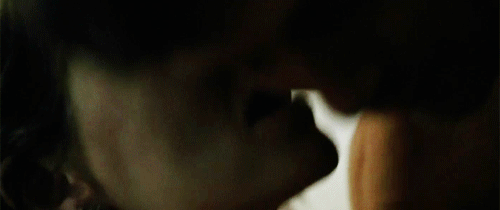

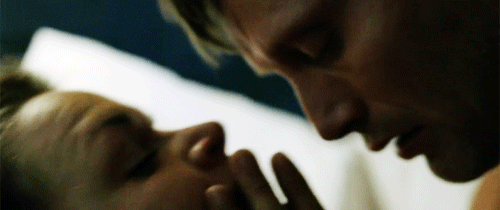
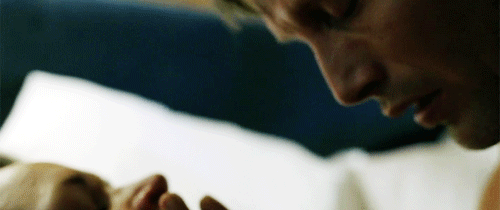

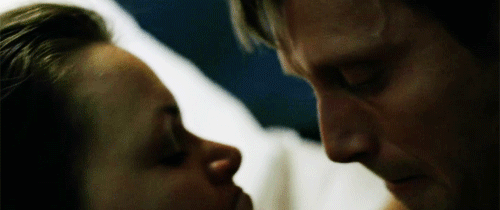
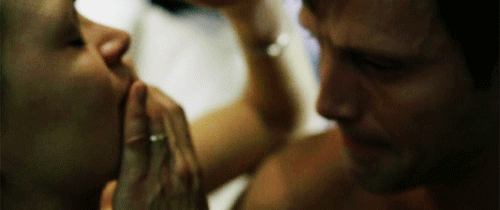
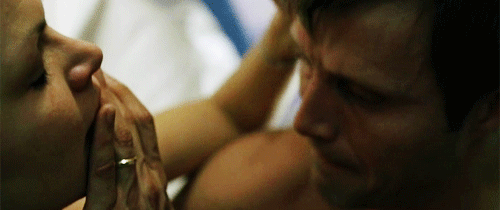
Prag, 2006.
By: thejennire
Check the Tags!!! [x]
#prag#prague#mads mikkelsen#filmedit#Stine Stengade#movie#cinema#film#scene#00s#2006#Christoffer#Maja
109 notes
·
View notes